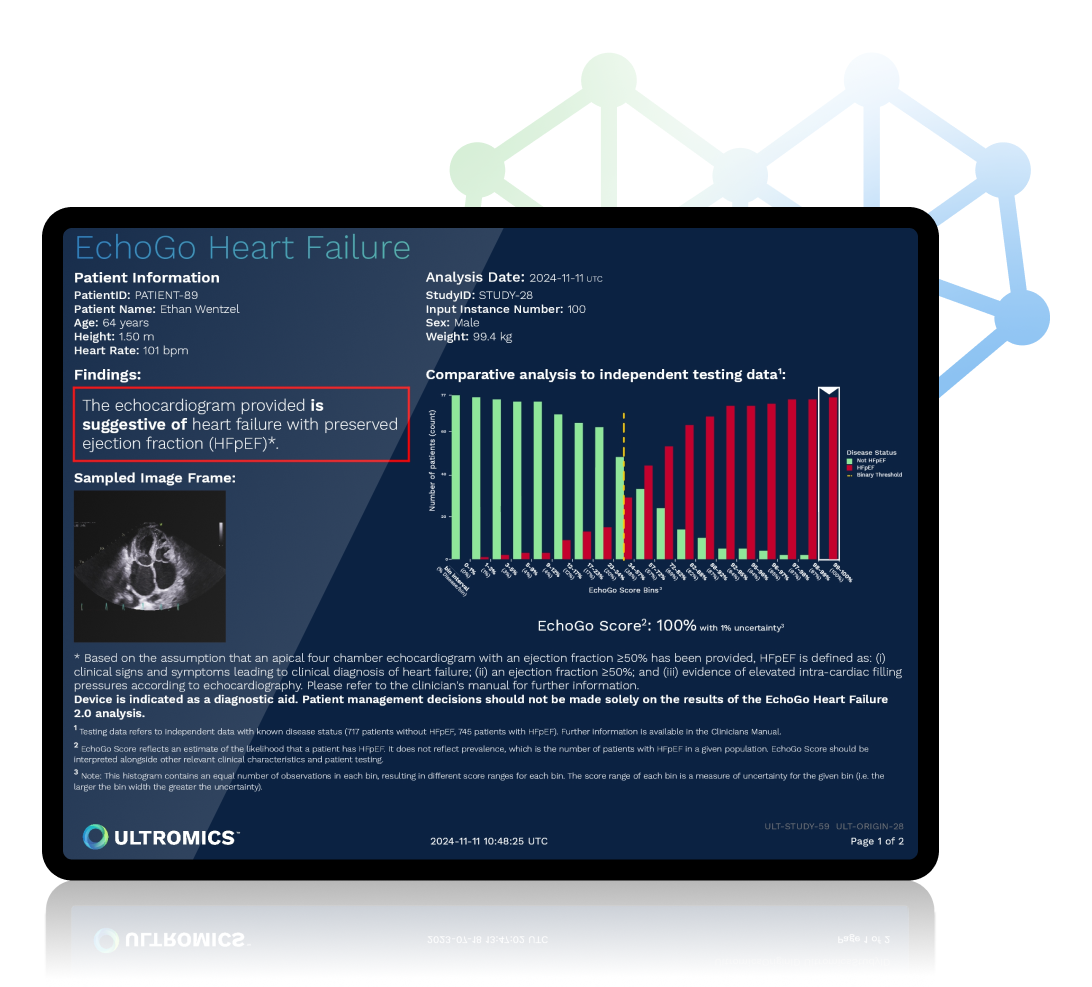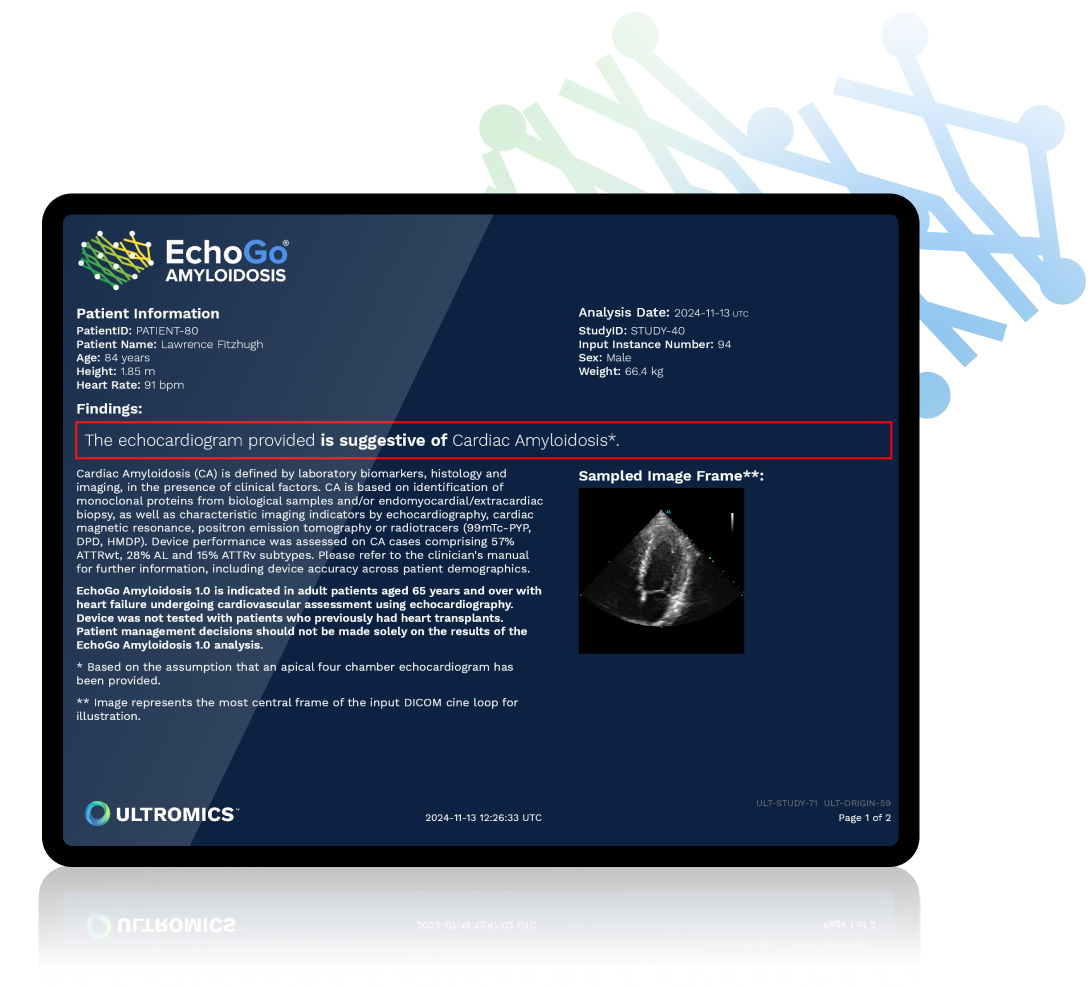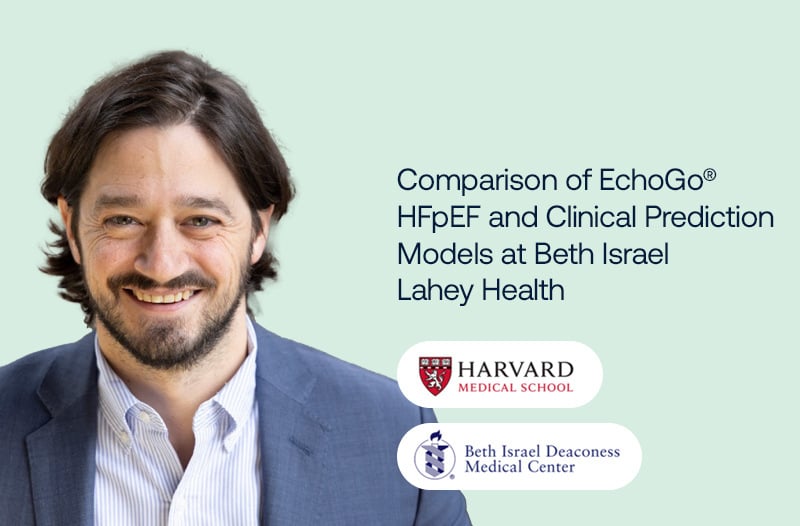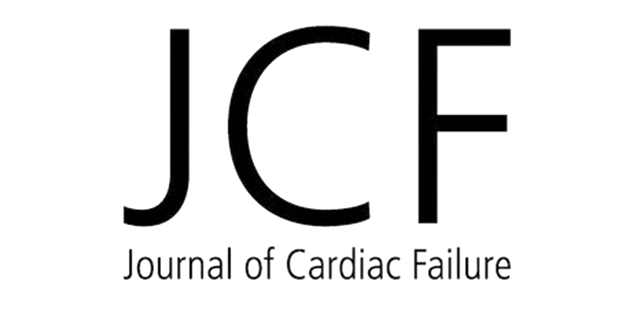
Heart Failure Uncovered
Ultromics provides clinically validated AI that helps diagnose complex cardiac diseases through the analysis of routine echocardiograms.



Breakthrough Technology
Improved diagnostic accuracy and classification
Achieving a new standard of care in diagnostic precision.
Automated reports to support clinical decisions
Reports delivered in under 20 minutes.
“This novel solution applies AI to cardiovascular imaging to greatly simplify identification of patients with HFpEF, a diagnosis that can be challenging to make, and allow more expeditious treatment.”
The EchoGo® platform
The EchoGo® platform operates seamlessly in the background, running Ultromics’ medical devices at scale. Designed to integrate effortlessly into your workflow, EchoGo® connects with your existing infrastructure and provides seamless access to reports.
Integrate Seamlessly
- Easily implemented, with no hardware/software at site.
- Integrates with existing workflows and IT stacks.
- Secure cloud VPN connection and data anonymized.
Analyze Data
- EchoGo® powers FDA-cleared medical devices, including EchoGo® Heart Failure and EchoGo® Amyloidosis.
- Returns structured reports via automated DICOM workflow.
- Reports are sent to PACS and available for the interpreting physician.
Get Reimbursed
- Inpatient: EchoGo® is reimbursed under the DRG payment methodology.
- Outpatient: CPT code 0932T for EchoGo® Heart Failure (outpatient, office, physician) – $316 per analysis (covered by Medicare and select commercial insurers).
Scale with Ease
- Deploy Ultromics’ medical devices across any care setting—from hospitals to clinics—without workflow disruption.
- Minimal training to onboard new staff with ease.
Working with global leaders to deliver
transformative outcomes
Each of our partners are innovation leaders are working with us to improve care. We partner with exceptional leaders across all stages to build transformative technologies.


Perspectives from leading experts
Latest research and innovation
Clinically Proven and FDA-cleared
Ultromics’ AI is trained on over a decade of outcome data to support reliable identification of potential cardiac abnormalities on echocardiograms. Recognized for its transformative impact, the technology has received Breakthrough Device Designation and clearance by the FDA.

Up to 64% of HFpEF patients may be undiagnosed2
Proven to detect HFpEF with
90% sensitivity and 86% specificity1



Cardiac amyloidosis typically requires patients to have 5 or more medical visits before a diagnosis is made.
Proven to detect CA with 85% sensitivity and 93% specificity.


“EchoGo® Amyloidosis is going to be revolutionary, based upon the volume of undiagnosed patients that are out there. It’s going to undoubtedly detect patients and impact morbidity and mortality for this disease.”
Leading innovation with scientific excellence and clinical validation
We are redefining heart failure as we know it
Innovation is at the heart of everything we do
At the heart of our mission is a commitment to making heart failure detection easier for providers and prognosis better for patients. Healthcare professionals should receive critical information they need minimizing the added risks and costs of untreated patients or further procedures. Staying true to the standards set by our Oxford University origins, we are partnering with the most trusted and validated medical organizations in the world to improve quality of life and reduce the burden on the healthcare system at large.
“The FNIH will harness valuable perspectives and expertise of a select number of collaborations, including Ultromics, to alleviate this unmet need and pave the way for better classification and more precise treatment strategies.”
[1] Gerber Y, Weston SA, Redfield MM, et al. A contemporary appraisal of the heart failure epidemic in Olmsted County, Minnesota, 2000 to 2010. JAMA Internal Medicine. 2015;175:996–1004. [2] Savarese G and Lund LH. Global public health burden of heart failure. Cardiac Failure Review. 2017;3:1:7-11. [3] Borlaug, BA, Sharma K, Shah SJ, et al. Heart failure with preserved ejection fraction, :JACC Scientific Statement. Journal of the American College of Cardiology. 2023;81:1810–1834. [4] Akerman AP, Porumb M, Beqiri A, et al. Comparison of clinical algorithms and artificial intelligence applied to an echocardiogram to categorize risk of heart failure with preserved ejection fraction. Journal of the American College of Cardiology. ACC. 2023;81 (8_Supplement) 360.
Curious about how Ultromics can support your facility?
Request a meeting with us to learn more





